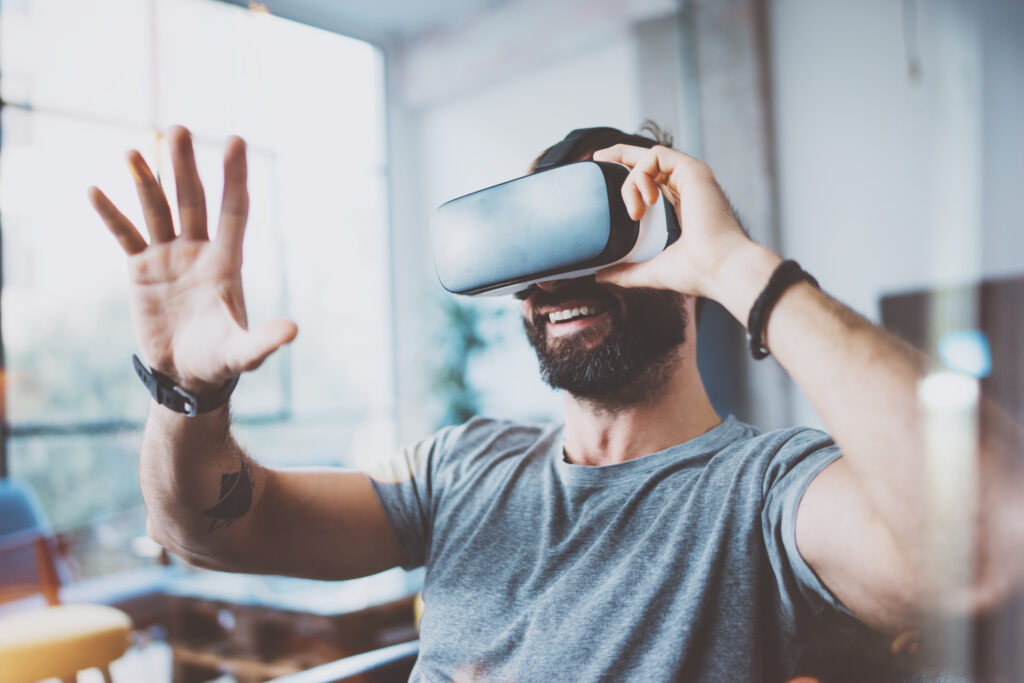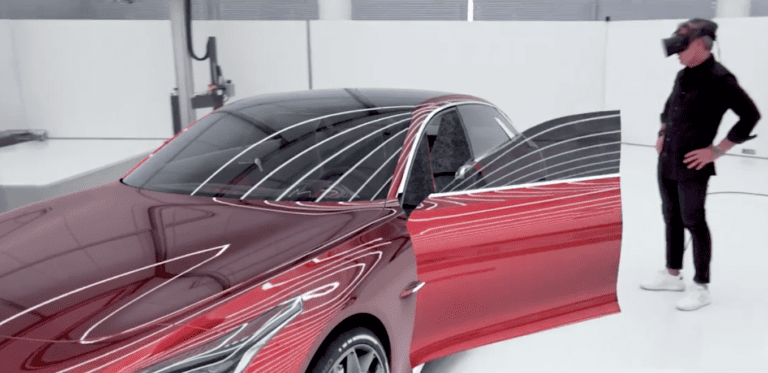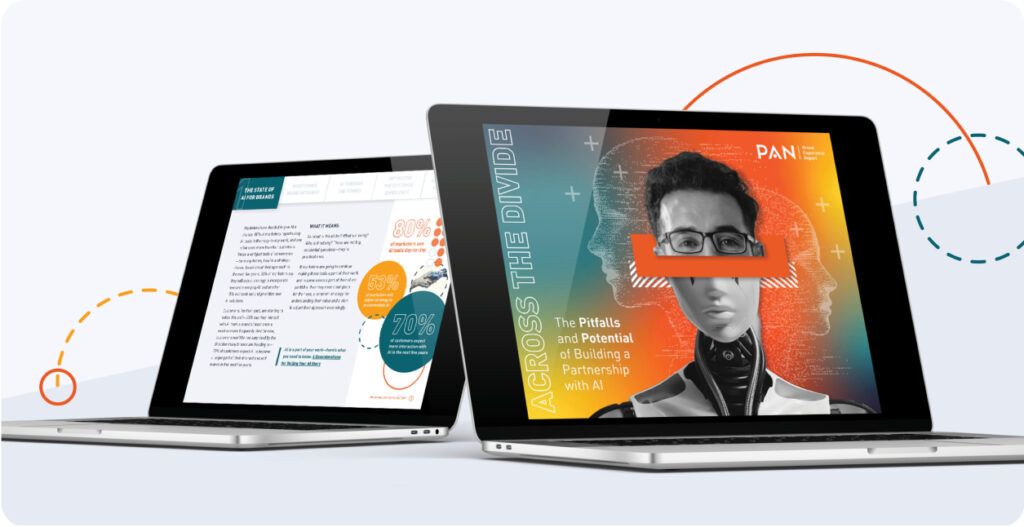“We wanted flying cars, instead we got 140 characters” – Peter Thiel, What Happened to the Future? (2011)
Us humans are a demanding lot at the best of times. But here, Thiel captures the unique impatience of the digital age.
We’ve been so spoiled by the breakneck pace of innovation in recent decades that when cool new tech arrives and doesn’t change the world overnight, we are quick to write it off completely.
It happens so frequently that the smart people at Gartner have illustrated the core trends and patterns around the phenomenon. The Gartner ‘Hype Cycle’ identifies the different stages of promising new technologies that burst onto the scene, but then struggle to live up to the impossibly high expectations.

The pattern generally starts off with lots of excitement as the breakthrough technology captures people’s imagination (‘Innovation Trigger’).
This then spills over into overhyping in the media, often fueled by investors, silly funding rounds and a heavy dose of wildly optimistic business leaders, analysts or outspoken industry influencers.
The buzz inflates people’s hopes to such unrealistic heights, the only way to go is down (‘Peak of Inflated Expectations’).
If the technology manages to pull out of the resulting ‘Trough of Disillusionment’, the ‘Slope of Enlightenment’ is where some common sense finally returns to the conversation and people begin to explore and appreciate where the technology can be put to effective use, and in practical ways.
The final ‘Plateau of Productivity’ stage is when widespread adoption, unburdened from hype, starts to take off and the long overdue promise is gradually realized.
The Virtual Reality Hype Cycle
Virtual reality (VR) is a perfect example of a technology that has been through the hype cycle ringer. Arguably, more than once. Its latest turn started in 2012 with the famous Oculus Kickstarter crowdfund campaign that raised a record (at the time) $2.5 million from 10,000 investors for its Rift launch device. Just a couple of years later, Facebook had snapped up the startup for a cool $2 billion.
The publicity which followed reignited an explosion of interest in the decades old technology, as the potential for mass consumer adoption finally appeared within reach. Start-ups popped up in the thousands, major global tech brands got in the game and billions in investment flowed into the new high-growth sector. But by the time Mark Zuckerberg announced his goal to get “a billion people in virtual reality” at Oculus Connect in 2017, the ‘Peak of Inflated Expectations’ had already been reached.
Funding scaled back, start-up failures began to mount and the ‘This is the year for VR’ media headlines were soon replaced by ‘VR is Dead!’ pieces. Only now, buoyed by the unique circumstances of a global pandemic, are VR and augmented reality (AR) emerging from the trough of disillusionment.
A steady stream of real-world use cases, hard growth numbers, big market news and product developments is getting people quietly pumped about VR again, pushing the tech towards the ‘Plateau of Productivity’ and giving a previously cynical media no choice but to take another look.
It is a really exciting time, with the enterprise sector leading the way. And there are plenty of great examples of companies getting their communications just right that the whole industry can learn from.
Keeping It Real
Advanced XR (extended reality)/VR enterprise headset maker, Varjo, sets the bar for wowing while at the same time demonstrating real world use cases and partnerships that bestow credibility.
It has been steadily garnering a lot of buzz, with mountains of top tier glowing media coverage and ever-increasing funding rounds through a visually-led comms strategy. This not only shows off the tech but provides compelling voice of the customer (VoC) case study examples of businesses that are already employing the product, and achieving exceptional results.
See a real-life use case of Vario’s headset in the video below.
Bristol based medical-focused VR training platform, Virti, is another example of a company letting its successful use cases do the talking. During the pandemic, it has come to prominence by partnering with the NHS to train clinicians remotely on the “soft skills” required to impart diagnoses, as well as how to safely use PPE, navigate unfamiliar intensive care wards and engage with patient families.
Its opportunistic media relations strategy took full advantage of the COVID-dominated news agenda to land top tier coverage around the partnership, adding credibility to the business message with supporting hard data that demonstrated boosted performance through VR.
The Secret to VR Communications: Show, Don’t Tell
Although Immersive VR Education has been steadily building an exciting business in the educational content and workplace training space since 2014, the company has come into its own since launching its virtual events platform, Engage, not long before COVID-19 hit. Over the past 12 months it has exploded in popularity, holding weekly corporate events as lockdown pushed businesses to leverage technology to solve remote working challenges.
Engage has built up an avid fanbase of users who love to regularly share visual content of their virtual event creations. There is no better way to sell the platform than have highly engaged customer advocates ‘show and tell’ their experiences across social media.
For just a taster, have a look at Immersive VR Education’s unique Christmas party on the Engage platform here.
AR start up, XYZ Reality, is also employing a high-quality video-led social strategy to show how its amazing product is transforming the future of the construction industry by introducing game-changing efficiencies at the project planning stage.
See virtual reality in action by clicking the video below.
Let the Numbers Do the Talking
The success of Facebook’s Oculus Quest 2 headset represents a real watershed moment for the industry, and gives a lot of reasons to be positive about the future. It is estimated that over 1 million headsets have been sold to date, justifying the company’s strategy to overcome one of the main obstacles to mass adoption by reducing the device to an achievable consumer price point.
Mark Zuckerberg, who has been generally conservative in the last number of years with his statements about the growth of the XR side of the business, has said Quest 2 is ‘on track to be first mainstream VR headset’.
Immerse, a rapidly growing enterprise VR training platform, is also going to market confidently with its growth figures, announcing revenue uplift of more than 300 percent in just the last 12 months as demand for tech solutions skyrocketed during the pandemic.
As VR communication becomes more serious and sophisticated, thought leadership has a strong role to play in making the business case for the technology.
“As VR communication becomes more serious and sophisticated, thought leadership has a strong role to play in making the business case for the technology.”
Management consultancy PwC, has been leading the charge here. Its Seeing is Believing study identified the potential for VR/AR to add $1.5 trillion to the global economy by 2030. Among a host of other nuggets in the report, it found that those being taught in VR demonstrated 340 percent more confidence to employ what they learned versus traditional e-learning methods at 10 percent.
This is the type of needle-moving stat that makes it hard for businesses to ignore the technology when considering workplace training programmes.
Communications Approaches for Tech PR Pros
So what can VR marketers and communicators take from all this?
Keep the ‘Hype Cycle’ in mind when framing brand stories and designing your go-to-market strategies. Understanding where the perception of VR has been in the eyes of the market, and having a grounded awareness of where it is now, is vital for positioning your new product offerings so messages land with target audiences and a jaded media.
Hyperbole and exaggerated promises on the future of VR won’t cut it anymore. Too many are still falling into this trap. Prospects and journalists want to see and hear about real world applications, and how the technology can have a genuine business impact today.
So remember, whether a rolling out a targeted PR, content or social media strategy:
- Keep it visual – seeing is believing with VR, so wow with content that shows the tech in action in real life scenarios
- Voice of the customer – let your customers and partners do the hype for you
- Hard numbers – don’t just talk about business growth or product effectiveness, support with owned data or market research
If the industry gets it right this time round and keeps expectations in check, VR might finally get its year in 2021.





